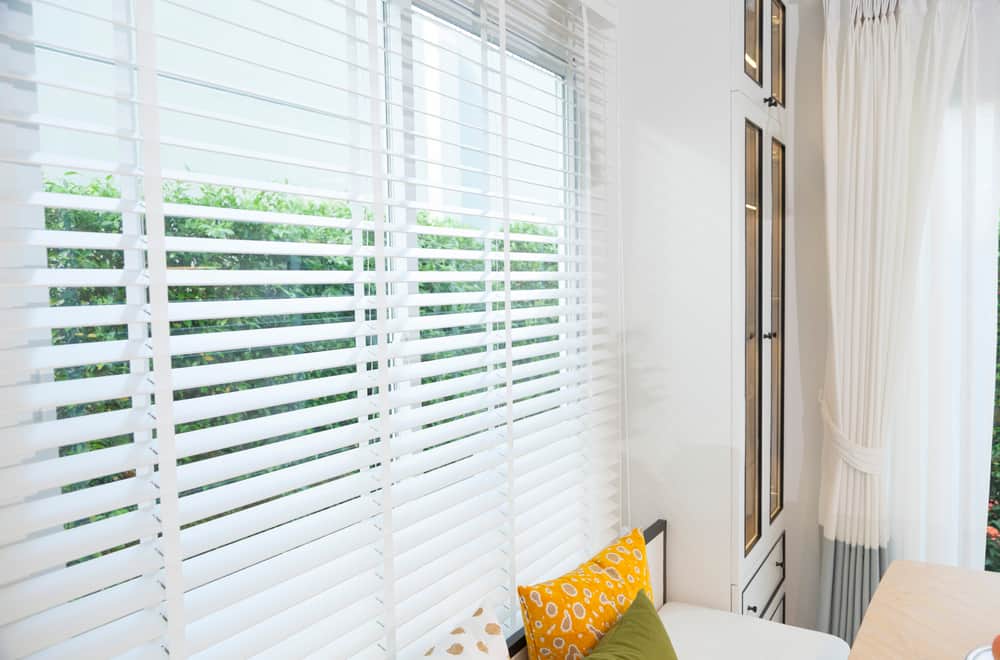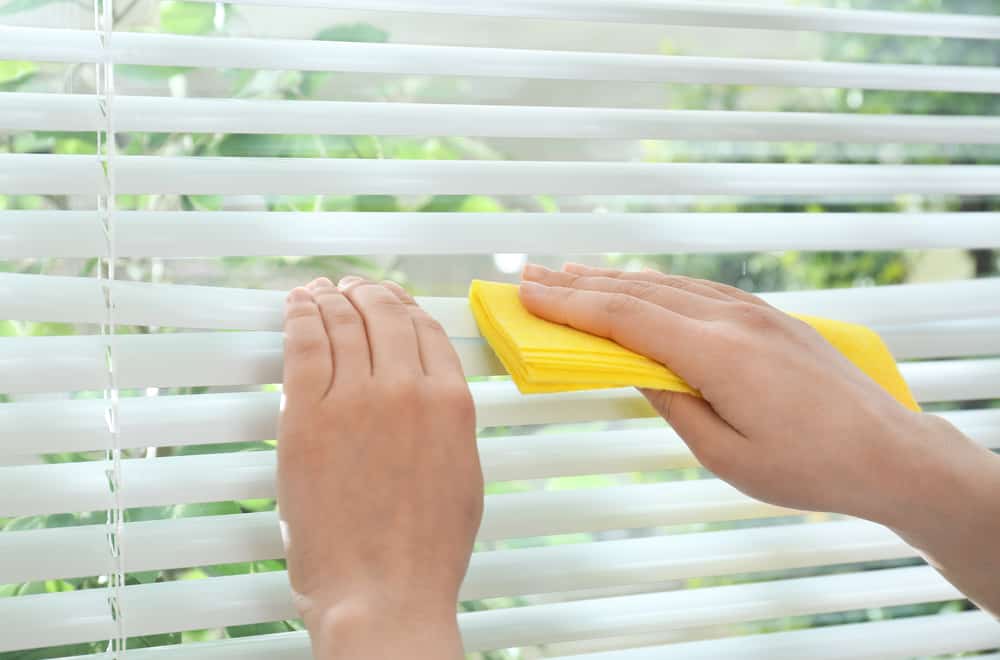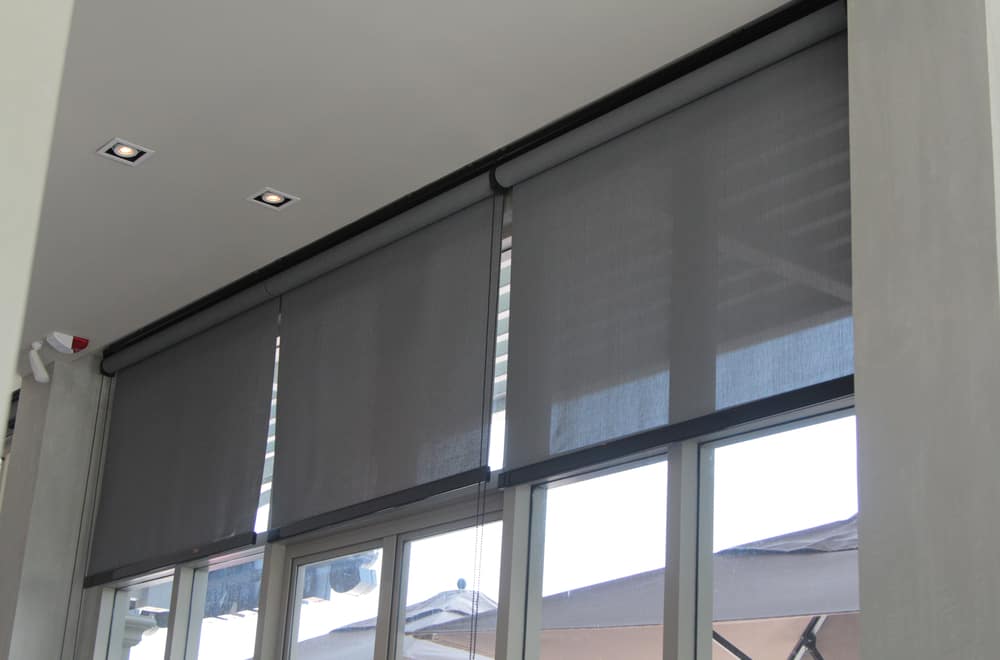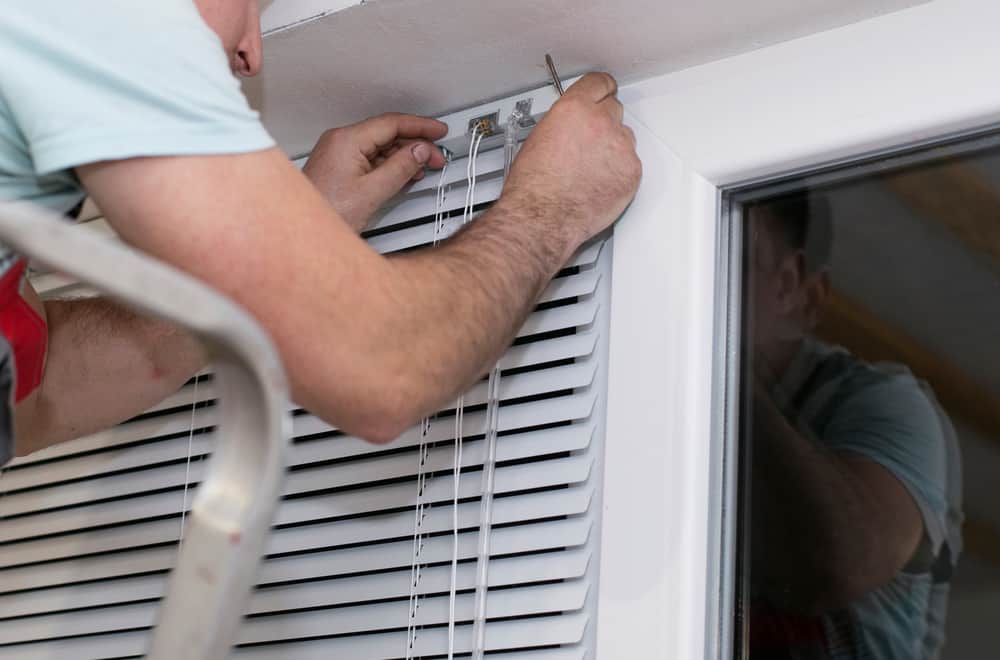Many people hesitate between vinyl vs. aluminum blinds when it is time to install them in their homes. The reason is that both options have excellent features. Therefore, the only thing to do is check the crucial benefits of each type.
Luckily, there are numerous factors you can use to determine both options’ advantages, including construction, durability, maintenance level, availability, and affordability. Compare them and pick out blinds that can save you from direct sunlight and protect your privacy in the best possible way. Let’s take a look.
Table of Contents
Blinds
Highly functional, convenient, and versatile window blinds are a popular window covering type that beautifies your home and protects it from excessive sunlight. You can find numerous models on the market.
Blind types
It is vital to pick out the most appropriate blind type for your home or office. Luckily, numerous variations are available nowadays, and everyone can find the best possible option, depending on their taste and requirements.
- Vertical blinds
- Smart blinds
- Venetian blinds
- Panel blinds
- Mini blinds
- Micro blinds
- Curtain blinds (tie-up shades)
- Roman shades
- Pleated shades
- Roller shades
- Solar shades
- Cellular shades
- Skylight shades
- Outdoor shades
Blinds’ materials
You can find blinds created of numerous material types, such as:
- Wood
- Faux wood
- Metal
- Plastic
- Natural fabric
- Synthetic fabric
- Paper
Vinyl Blinds
Vinyl blinds are easy to flex and are not prone to denting or creasing. Unfortunately, it is impossible to repair once broken pieces. Be careful when buying this blind type since imported products can contain lead, unlike those made in the US.
Pros
- Flexible and lightweight vinyl blinds are a durable option with a long lifespan
- You can find them in various styles and designs
- This product provides excellent insulation properties and successfully reduces glare inside your home
- Vinyl blinds are easy to clean and require occasional dusting
- They are inexpensive
Cons
- These blinds look cheap and unattractive
- Vinyl blind absorbs heat, warming up the air inside the house and increasing the temperature
- Vinyl insulation properties are poor during winter
- Thin and lightweight vinyl is moderately durable
- Blinds made of this material quickly break under pressure, particularly when you install them on more sizable windows
Aluminum Blinds
Aluminum blinds are strong but can dent or bend under pressure. Luckily, you can repair these imperfections and use them despite being a bit bumpy. On the other hand, they always have a standard look without the possibility to choose different textures.
Pros
- You can choose among numerous colors, styles, and thicknesses and customize them according to your taste
- Beautiful and stylish aluminum blinds are durable
- It is a mold-resistant and water-resistant material
- Aluminum blinds are highly energy efficient and provide absolute privacy
- It is a cost-effective product
Cons
- Aluminum blinds come in limited texture options
- Since aluminum is metal, blinds can be noisy
- You can see the dust on their shiny surface over time, particularly when you install those in darker colors
- Imported vinyl blinds sometimes contain traces of harmful lead
Mini Blinds
Mini blinds are a horizontal window blind type made of slats connected by strings hanging inside or outside the window box. They are an elegant solution for schools, offices, and industrial facilities.
Both vinyl and aluminum mini blinds resemble Venetian-style blinds but come with narrower slats. They are typically half the width of standard models, measuring 0.6 or 1 inch (15 or 25.5 mm). They have several advantages, including:
- Versatile mini blinds are an excellent option for households and offices
- This energy-efficient blind type blocks sunlight and provides the necessary privacy
- Durable, water-resistant, and affordable mini blinds are built to last for years
- They are easy to install and require low maintenance
You can find vinyl mini blinds in numerous styles, colors, and textures. The huge advantage of this lightweight and durable option is the possibility to install them on every window, regardless of their size.
Aluminum mini blinds with horizontal slats are similar to those made of vinyl, but the available color and texture options are limited.
Vinyl Blinds vs. Aluminum Blinds
Blinds made of aluminum and vinyl are among the most desirable options you can get for residential homes and commercial buildings. Both types are convenient, and quality but can differ in a few crucial features.
Vinyl vs. aluminum blinds |
||
| Feature | Vinyl blinds | Aluminum blinds |
| Appearance | Unattractive | Visually appealing |
| Colors | White and alabaster, plus customized options | Wide color range |
| Durability | 7 to 8 years | 7 to 8 years |
| Energy efficient | Poor | High |
| Eco-friendly | Not | Recyclable |
| Installation | Uncomplicated to install | Uncomplicated to install |
| DIY project | Yes | Yes |
| Maintenance | Low | Low |
| Price | Affordable | Moderately expensive |
Durability
Sturdy aluminum blinds can last 7 to 8 years when maintained correctly. You can expect flexible vinyl blinds to last about the same unless you physically damage them.
Colors
Vinyl blinds – In most cases, manufacturers produce vinyl blinds in white and alabaster colors. However, you can order other customized colors as desired.
Aluminum blinds – Aluminum blinds are available in a wide color range that fits any home decor.
Styles
Vinyl blinds – Vinyl blinds are available in various styles and are more customizable than aluminum ones. They also come in vertical or horizontal options and a wide range of textures and finishes.
Aluminum blinds – You can find aluminum blinds in any color you want, but they are limited in finishes and textures.
Construction
Vinyl blinds – Vinyl blinds won’t quickly deform despite their thickness. However, their look will worsen over time.
Aluminum blinds – You can choose between aluminum blinds thick 6, 8, or 9 gauge. Be aware that a higher gauge means better durability. Unfortunately, all models will bend and crease eventually.
Light blocking capacity
The opaque aluminum blind type effectively blocks sunlight when entirely closed. It also reflects heat and keeps rooms cooler. On the other hand, vinyl blinds successfully reduce glare inside the house.
Water resistance
Vinyl blinds – Practical vinyl blinds are waterproof, and you can install them in any room in your home, particularly in the kitchen.
Aluminum blinds – These blinds are entirely water-resistant and flame-retardant, making them an excellent option in regions with high humidity. You can install them in your kitchen and bathroom without worry of rot and corrosion.
Privacy
Vinyl blinds – Vinyl blinds are an excellent option when privacy is your primary concern. Once sluts are closed, it is impossible seeing anything through them.
Aluminum blinds – Closed aluminum blinds provide complete privacy. However, you can notice silhouettes and shadows through thin models when a light is on at night.
Energy efficiency
Vinyl blinds – Vinyl blinds absorb sun rays, increasing the temperature inside the house in summer. On the other hand, they won’t warp and distort in direct sunlight.
Aluminum blinds – Since aluminum blinds reflect sun rays, they are a better energy-efficient option than those made of vinyl. This feature provides a warm home in winter and a cooler atmosphere in summer.
Slat sizes
Vinyl blinds – You can buy vinyl blinds with slats in only two sizes, the standard of 1 inch (2.5 cm) and the wider option of 2 inches (5 cm).
Aluminum blinds – Aluminum blinds’ slats widths can vary from 0.25 to 4 inches (0.6 – 10 cm). The standard width is 1 inch (2.5 cm), but you can often find models with slats of 0.5 and 2 inches (1.27 and 5 cm).
Installation
Vinyl and aluminum blinds are uncomplicated to install, but you should let a professional do that job. The installation process is more or less the same for both options and requires skill and a few necessary pieces of tools.
Maintenance
Both vinyl and aluminum blinds require low maintenance. In most cases, it will be enough to clean them with 50/50 water and white vinegar solution and then repeat the process with clean water. Since vinyl slats won’t dent quickly, you will have fewer problems with their cleaning.
Repairing
Vinyl blinds – Once vinyl slats crack, you can’t repair them. The only solution is to buy a new set of blinds.
Aluminum blinds – The great thing is that you can smooth possible bends and dents on aluminum slats. Once warped, slats will never look like they did before the damage, but blinds will still be functional.
Price
The rule of thumb is that bigger blinds are more expensive, regardless of the material they are made of.
Vinyl blinds – They are a more affordable option of two, and the difference in prices will increase with more sizable models. However, not all vinyl blinds are inexpensive. Be prepared to set aside more money for those mimicking wood texture.
Aluminum blinds – Aluminum blinds are typically more costly than vinyl ones, but it is not always the case. You should pay less for basic models than for some top-quality vinyl blind designs.
There is one more thing! Even though aluminum blinds are often more expensive upfront, they will pay off through lower electricity and heating bills in the long run.
Summary
Both vinyl and aluminum window blinds are excellent for your home interior, but different features of these materials can or can’t be a desirable option for you. It will depend on several things, including durability, installation, maintenance level, and affordability.









